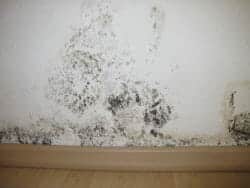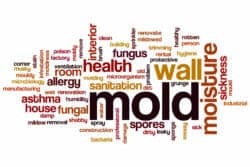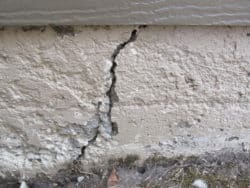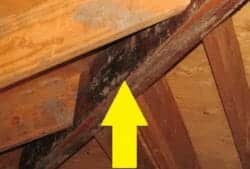Mold in Hidden Places: A Checklist Of Where To Look In Your Home
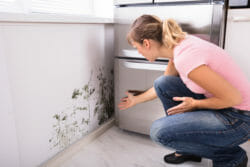
A “Checklist” of places to look for mold
If you have spotted mold in your home, it may also be present in other areas that you have not checked; some of which you may not have thought of.
Since mold can be a health issue, especially for those that are allergic to mold or have a weakened immune system, it is wise to give your home a thorough check for mold.
Mold grows well on paper products, cardboard, ceiling tiles, bath room tiles, grout and in wood products. Mold can also grow in dust, paints, wallpaper, insulation, drywall, carpet, fabric and upholstery.
It wasn’t there a month ago

In 24 to 48 Hours mold may develop
Mold is generally accompanied by moisture so checking areas where moisture may be present is key. Leaks and high humidity are two of the main culprits when it comes to mold growth and issues.
Looking for stains, discoloration, dampness, standing water, musty smells or moldy odors are warning signs that mold may be present. It is important to remember that not all mold is black; for it may also be brown, rust colored, blueish or white, depending on the type of mold and the material that it is on or in.
Many people don’t realize mold may start developing with-in 24 to 48 hours, although in these early stages you may not see visible evidence, however in a week or more you may start seeing visual evidence of growth. Naturally, if there is mold in walls, under carpet or in insulation in the attic, you may not see evidence of mold for a long time.
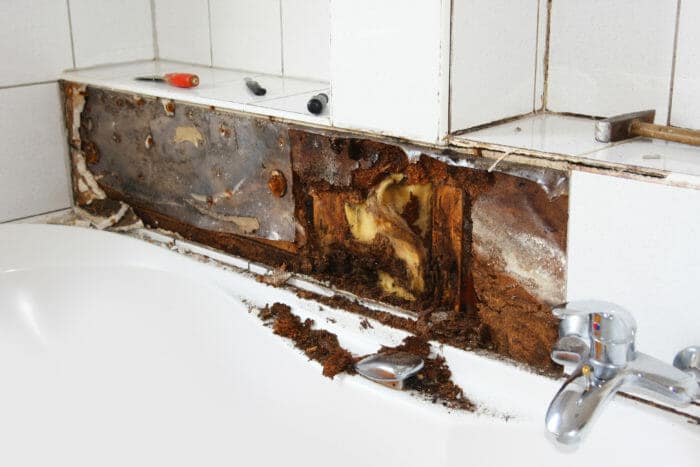
Mold is good at hiding out of sight
In tiled areas of a kitchen or bath there may be mold lurking. It may not show on the face of the tile but may be growing in the wall. Moisture may be sneaking into the wall area because the grout between the tiles have hairline cracks and is not sealed, thus moisture gets into the wall cavity.
There, it may grow for years without detection, until someone notices an odor or when there is a remodeling project that opens up the wall and the mold suddenly comes to light. At this point the wood framing may be deteriorated and need replacing, if there is insulation, it will need replacing. This type of issue may have been prevented by having good ventilation, periodical maintenance and sealing of tile grout.
Check these areas:
- Kitchen
- Under the sink
- Dishwasher area
- Under & behind refrigerators + the water line
- Garbage disposal leaks
- Bathrooms
- Under sink
- Around toilet base
- On all walls and ceilings
- Shower and tub areas
- Water heater area
- Pan under water heater
- Wall area around water heater
- Leaking or dripping pipes
- Check for stained areas on all walls, ceilings, floors
- Attic
- Vent penetrations
- Wet insulation
- Is bath fan venting into attic
- Check area directly above baths, lift-up insulation
- Roof sheeting in attic
- Rafters, trusses – any with mold on it
- Back areas of closets, especially if clothes have a musty odor
- Laundry room areas: check for leaks, wall stains and musty odors
Check Exterior siding and roof
Window areas
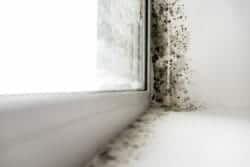
Windows are susceptible to leaking for several reasons. In example, the window may not have been properly flashed, it may have glass that is not seated in the frame properly, it may not be chalked properly or the window frame may be defective; all of which allows moisture to enter the home and wall areas.
In the winter, if there is a high humidity level in the home and the hot humid air hits the cold window glass, then moisture develops and runs down the window onto the surrounding area of the window. This excess moisture may create a condition for mold to grow. Therefore, checking around the window areas for stains and mold is prudent.
Do bathroom vents and the clothes dryer vent to the exterior?
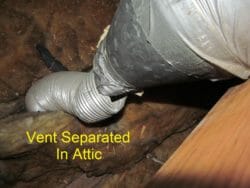
Bathroom vents and clothes dryers exhaust a tremendous amount of air that is heavily laden with moisture. Check to make sure that they don’t vent into the attic or the crawl space under the house, if there is one.
If so, you may find a concentration of mold growth in these areas. Bath rooms should vent to the exterior and laundry room dryers should also vent to the exterior, not into the attic, crawl space or the laundry room itself.
The two most overlooked areas
Attics. Most people never look over their attic areas for mold evidence, for who wants to crawl around in their attic. On top of that, most do not like to lift-up insulation to check under it, especially the areas above the bathrooms where there is a tendency for moisture to get trapped between the drywall and insulation.
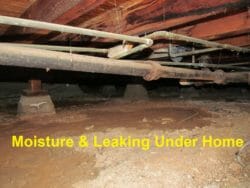
Crawl spaces. Homes with crawl spaces may have moisture issues that contributes to the growth of mold. Small plumbing leaks in crawl spaces may go undetected for weeks, months or even years. In addition, poor drainage around the homes’ foundation may allow moisture to build-up or even stand for long periods of time.
Another condition that contributes to mold is poor ventilation under a home which slows the drying process. A dark, damp crawl space with little ventilation is very conducive to mold growth. Checking for musty odors and inspecting a home’s crawl space for moisture, leaks, standing water and mold should be done on a regular basis.
Condos, duplexes and apartments
Discovering mold in condos, duplexes and apartments may be more difficult than in a single-family home. Should there be a leak or mold in the unit next too or above you, you may not be aware of a mold problem for quite some time. Perhaps the only visible evidence of mold is in the neighboring unit or their attic, then you may not become aware of it for a long time. The first evidence you have may be a musty odor or your allergies kicking up. Often the only way of knowing if there is mold is by taking air samples in your unit.
Musty and moldy odors

Moldy and musty odors are similar in nature and both may be caused by the existence of mold or mildew. Areas that have musty odors should receive extra attention when looking for mold, for you may not be able to see the mold but you may be able to smell it.
Caution, vacant homes that have been closed up for months and lacked fresh air circulation may have a musty odor, but not have mold; therefore, you should not jump conclusions.
Bottom Line
Mold maybe hiding in your home without you knowing it. Looking for mold evidence from time to time is wise and the more susceptible you are to allergies or if you have a weakened immune system, the more important it is to check often.
Keeping all leaks repaired, keeping the humidity level low in your home and keeping bathrooms and damp areas properly clean will go a long way in reducing mold problems.
The old saying “Out of sight, out of mind” really applies when looking for mold in a home.

Will Serpula lacrymans destroy a home’s framing over time?
Can you legally remove mold from your house?
Can Black mold, mytoxins, Stachybotrys affect your health?
